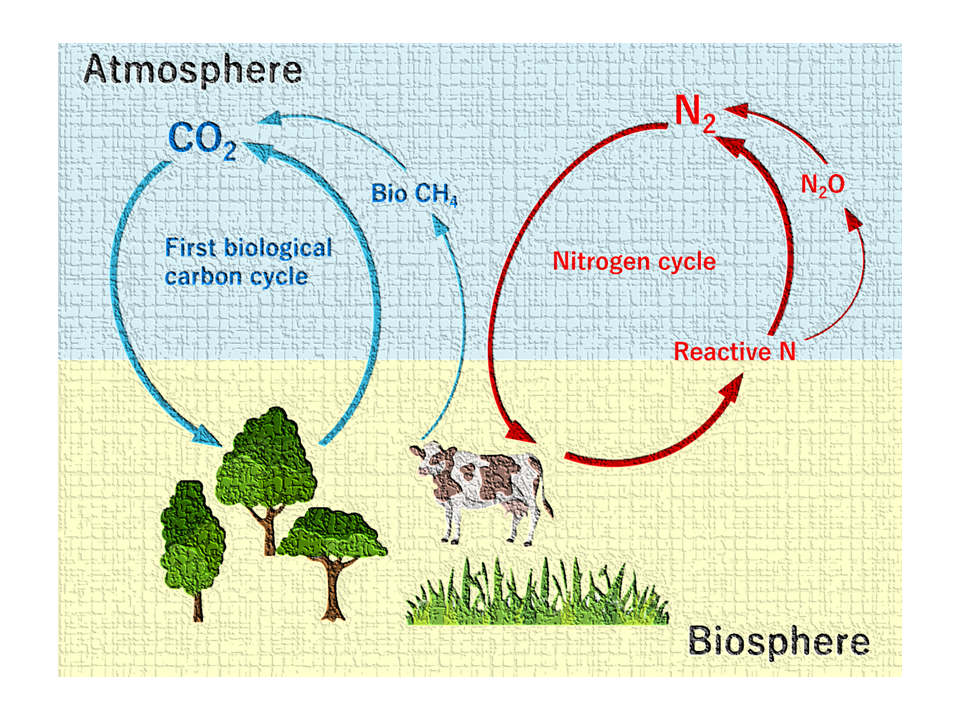Pick Up
1212. Impact of Agricultural Fertilization on Land-Atmosphere CO2 Exchange

1212. Impact of Agricultural Fertilization on Land-Atmosphere CO2 Exchange
Over the past half century, an increase in the seasonal CO2 cycle has been observed in high latitudes in the Northern Hemisphere. It has reportedly increased by 15% over the past 50 years at Mauna Loa in Hawaii and by more than 30% at Point Barrow in Alaska, where the seasonal cycle is much stronger.
These increases are thought to be primarily due to climate change and changes in high-latitude ecosystems related to agriculture. For example, warmer summers and longer growing seasons across high-latitude ecosystems could accelerate photosynthetic rates and enhance atmospheric CO2 uptake in the Northern Hemisphere summer. Forest regeneration at mid-latitudes and forest expansion at high latitudes similarly increase CO2 uptake by photosynthesis during the growing season. Photosynthetic CO2 fertilization may also be a factor. All these mechanisms (longer growing season, forest expansion, and photosynthetic CO2 fertilization) suggest increased plant productivity in high-latitude ecosystems, which is consistent with the greening trend observed from space. However, rising temperatures and increasing CO2 concentrations do not appear to fully explain the seasonal increase in CO2 amplitude.
A paper recently published in Nature Communications reveals that agricultural nitrogen (N) fertilization is the largest contributor to the increase in amplitude (45%) of the Northern Hemisphere land-atmospheric carbon flux. The results of the study indicate the importance of agricultural management in carbon cycle feedbacks in the Northern Hemisphere and suggest that agricultural N fertilization should be considered in future carbon cycle simulations.
Agriculture has become increasingly intensive over the past half century, beginning with the Green Revolution, and crop production has tripled due to increased use of irrigation, fertilizers, and high-yielding varieties over the past 50 years, with important implications for the carbon cycle. Agricultural intensification in mid-latitudes may contribute to the large increase in seasonal CO2 amplitudes observed in high latitudes.
This study investigated the change in seasonal amplitude of atmospheric CO2 exchange simulated by an Earth System Model and explored the potential role of agricultural management and climate change in driving changes in CO2 exchange between land and the atmosphere over the observational record. Results suggest that industrial N fertilization contributes more to the increase in seasonal CO2 amplitudes than irrigation and climate change. CO2 fertilization and climate are also important drivers of changes in seasonal carbon flux amplitude, especially at high latitudes, but industrial N fertilization has a larger impact across the Northern Hemisphere, increasing the current average amplitude to as much as 9 ppm CO2 in some regions and increasing land-to-atmosphere carbon flux by 45% across the Northern Hemisphere.
The results of this study show that agricultural N fertilization is an important component of seasonal carbon cycle fluxes that is currently overlooked in most simulations. Given the important role of agricultural N fertilization in regulating carbon fluxes, it is recommended that models used for future carbon cycle simulations include the effects of agricultural N fertilization.
(References)
Danica L. Lombardozzi et al, Agricultural fertilization significantly enhances amplitude of land-atmosphere CO2 exchange, Nature Communications (2025). https://www.nature.com/articles/s41467-025-56730-z
Contributor: Miyuki IIYAMA, Information Program
